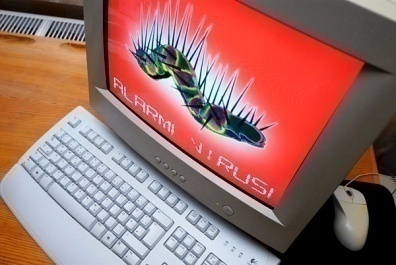Computer Virus
A computer virus is a program which reproduces itself. It may attach to other programs, it may create copies of itself (as in companion viruses). It may damage or corrupt data, change data, or degrade the performance of your system by utilizing resources such as memory or disk space.
Types of Computer Viruses
A computer virus may be categorized with one or more of the following four designations:
- Boot sector computer virus
- Master Boot Record (MBR) computer virus
- File infector computer virus
- Macro computer virus
A computer virus which displays characteristics of more than one of these categories is known as a multi-partite computer virus.
Boot sector viruses
Boot sector viruses infect the boot record on hard disks, floppy disks, and theoretically also on CD’s and DVD’s.
A boot sector virus does not need to be able to successfully boot the victims computer to infect it. Because of this, even non-bootable media can spread a boot sector virus.
Once the infected computer does successfully boot, the boot sector virus stays in memory and infects floppies and other media when they are written to by the infected computer.
Boot sector viruses have become less common as floppy disks have become rarer.
Master Boot Record (MBR) viruses
Master Boot Record (MBR) viruses are very similar to boot sector viruses, except that they infect the MBR (Master Boot Record) instead of the boot sector.
File infector viruses
File infector viruses infect files which contain executables code, such as .EXE and .COM files.
Some file infectors are memory resident. This means that the virus will stay in memory and continue to infect other programs. Other file infector viruses only infect other files when they are executed.
Macro viruses
Macro viruses infect certain types of data files. Most macro viruses infect Microsoft Office files, such as Word Documents, Excel Spreadsheets, PowerPoint Presentations, and Access Databases.
Macro viruses typically use the Visual Basic macro language which is built into Microsoft Office applications.
Some macro viruses also share the characteristics of a computer worm, in the way in which they spread themselves across networks.
Multi-partite viruses
Multi-partite viruses share the characteristics of more than one virus type. For example, a multi-partite computer virus might infect both the boot record and program files.


Comments - No Responses to “Computer Virus”
Sorry but comments are closed at this time.